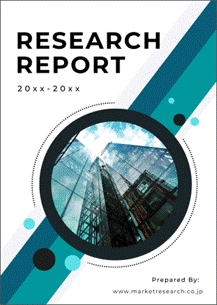 | • レポートコード:D0-MOR-AP0094 • 出版社/出版日:Mordor Intelligence / 2020年4月20日 • レポート形態:英文、PDF、110ページ • 納品方法:Eメール(受注後2-3営業日) • 産業分類:航空宇宙及び防衛 |
| Single User | ¥629,000 (USD4,250) | ▷ お問い合わせ |
| Team User | ¥703,000 (USD4,750) | ▷ お問い合わせ |
| Corporate License | ¥1,110,000 (USD7,500) | ▷ お問い合わせ |
• お支払方法:銀行振込(納品後、ご請求書送付)
レポート概要
| 本調査レポートは、航空宇宙及び防衛における人工知能&ロボットの世界市場について調査・分析した資料で、航空宇宙及び防衛における人工知能&ロボットの市場概要、動向、セグメント別市場規模、地域別分析、競争状況、企業情報、市場機会分析などで構成されています。 |
The artificial intelligence and robotics in the aerospace and defense market (henceforth, referred to as the market studied) is anticipated to register a CAGR of over 20% during the forecast period.
– The use of robots in space exploration, integration of AI in aircraft cockpits, implementation of automated baggage check-in, customer queries, and answers, biometric-based passenger check-in, and other technological developments in airports are some of the factors propelling the growth of the market studied during the forecast period.
– The utilization of AI and machine learning in the manufacturing process of the aircraft is anticipated to increase the production rate without compromising the quality of the product. Aerospace giants, like Boeing and Airbus, are investing in this technology, and such investments by OEMs are expected to help the market studied to grow.
– Incorporation of artificial intelligence (AI) into the design of traditional battle networks is expected to enhance the performance of the current platforms of the armed forces around the world.
– The massive investments made by countries, like the United States, Russia, China, and Israel in the next generation defense systems and the large scale procurement of such systems by countries, like India, Saudi Arabia, Japan, and South Korea, are expected to drive the growth of artificial intelligence and robotics in aerospace and defense market.
Key Market Trends
The Military Segment is Expected to Register the Highest Growth Rate During 2020-2025
The military segment of the market studied is expected to register the highest CAGR during the forecast period. Advances in AI, deep-learning, and robotics are aiding new military capabilities to the armed forces, with its applications ranging from intelligence, surveillance, and reconnaissance to offense/defense balances and nuclear weapons systems. Countries are also investing in these technologies to improve the operating efficiency of the detection systems, the accuracy of the weapons systems, and enhance battlefield communications. The United States Department of Defense (DoD) started Project Maven initiative that aims to bring AI and computer algorithms to war zones. Such investments are fuelling the growth of this segment during the forecast period.
The North America Region Dominates Artificial Intelligence and Robotics in the Aerospace and Defense Market, in Terms of Market Share
North America is expected to remain the largest market. This is majorly due to extensive investments of the US government into AI and also because of the investments of defense companies, like Lockheed Martin Corporation, Raytheon Company, and Boeing, among others. Development and deployment of robot parking helpers, facial recognition, and robot airport security are also adding a significant share to the growth of the market in this region. In the last couple of years, robotic customer service agents were deployed at Mineta San Jose International Airport to help navigate through the terminal. Additionally, big blue security robot was deployed at LaGuardia Airport to patrol terminal B. Such implementations of technology to improve security and operational efficiency of the airports are also acting as major driving factors in North America.
Competitive Landscape
The artificial intelligence and robotics in the aerospace and defense market is moderately fragmented with several companies involved in developing robotics and AI. Some of the prominent players in the market studied are SITA, Lockheed Martin Corporation, The Boeing Company, Thales Group, and Intel Corporation. The strategic investments and new business models may help companies to manufacture and provide AI-based solutions for its customers. Boeing launched disruptive computing and networks (DC&N) that is into research and development of solutions in AI, complex systems optimization, and secure communications for government and commercial applications. The partnerships and acquisitions of the local companies that have software and hardware capabilities compatible with machine learning and robotics are expected to increase the profitability of the key players in the aerospace and defense market.
Reasons to Purchase this report:
– The market estimate (ME) sheet in Excel format
– 3 months of analyst support
1 INTRODUCTION
1.1 Study Assumptions
1.2 Scope of the Study
2 RESEARCH METHODOLOGY
3 EXECUTIVE SUMMARY
4 MARKET DYNAMICS
4.1 Market Overview
4.2 Market Drivers
4.3 Market Restraints
4.4 Porter’s Five Forces Analysis
4.4.1 Bargaining Power of Buyers/Consumers
4.4.2 Bargaining Power of Suppliers
4.4.3 Threat of New Entrants
4.4.4 Threat of Substitute Products
4.4.5 Intensity of Competitive Rivalry
5 MARKET SEGMENTATION
5.1 Offering
5.1.1 Hardware
5.1.2 Software
5.1.3 Service
5.2 Application
5.2.1 Military
5.2.2 Commercial Aviation
5.2.3 Space
5.3 Geography
5.3.1 North America
5.3.2 Europe
5.3.3 Asia-Pacific
5.3.4 Rest of World
6 COMPETITIVE LANDSCAPE
6.1 Vendor Market Share
6.2 Company Profiles
6.2.1 Airbus SE
6.2.2 IBM
6.2.3 The Boeing Comapny
6.2.4 Nvidia Corporation
6.2.5 General Electric
6.2.6 Thales Group
6.2.7 Lockheed Martin Corporation
6.2.8 Intel Corporation
6.2.9 Iris Automation Inc.
6.2.10 SITA
7 MARKET OPPORTUNITIES AND FUTURE TRENDS